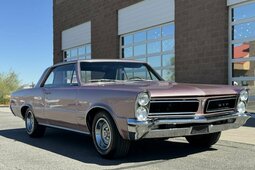A quintessentially British roadster equipped with a robust American V8, curated under the watchful eye of Carroll Shelby himself, the Sunbeam Tiger has earned its reputation as the more accessible counterpart to the Shelby Cobra. This compact sports car's design, which snugly accommodates a powerful V8 engine, presents a unique and thrilling blend of characteristics.
The inception of the Tiger dates back to the early 1960s when the executives at Rootes Group, the parent company of Sunbeam, decided to enhance their Sunbeam Alpine roadster with more power. The existing 4-cylinder pushrod engine, which delivered around 80 bhp, was deemed insufficient for their ambitions. According to lore, Ian Garrad, then the manager of West Coast sales for Sunbeam, utilized a wooden ruler to gauge the Alpine's engine bay dimensions roughly. He tasked a colleague with these dimensions to scout for a compatible engine across various car dealerships. The search concluded with the selection of Ford’s 4.3-litre V8, and Carroll Shelby was enlisted with a $10,000 commission to integrate this engine and its accompanying 4-speed transmission seamlessly into the vehicle. Shelby, already renowned for his successful creation of the Shelby Cobra, was the ideal candidate for this challenging engineering feat.
Increasing the engine's cylinder count from four to eight presented significant challenges. The installation of the V8 engine in the Sunbeam Tiger was so tight that, according to popular accounts, workers reportedly had to resort to using a sledgehammer to make minor adjustments to each engine's fit. This meticulous placement left very little space in the engine bay, complicating routine maintenance tasks. To mitigate these servicing challenges, an innovative solution was introduced: an access hole was created in the driver's foot-well, facilitating easier access for engine servicing. However, the modifications introduced new issues, such as a tendency for the Sunbeam Tigers to overheat. The vehicle's original cooling vents struggled to provide sufficient airflow to maintain an optimal temperature for the larger engine.
Despite its challenges, the Tiger garnered acclaim as a car for enthusiasts. The Mark I Tigers boasted a significant power increase, delivering 164 bhp—roughly double that of the Alpines. While this power output might not have been groundbreaking for the 1960s, the combination of a small frame and the relatively lightweight Ford 4.3-liter V8 engine, weighing in at around 200 kg, rendered the vehicle exceptionally agile. Additionally, some dealerships offered an optional power package that elevated the horsepower to 245 bhp. This enhancement was particularly remarkable given that the Mk I Tigers retained the same suspension and braking systems as those equipped in the standard Sunbeam Alpines, underscoring the vehicle's spirited performance potential.
The Mark I Tiger, which began production in 1964, was succeeded by the Mark II in 1967. The most notable upgrade in the Mark II was the introduction of a larger 4.7-liter engine, which produced 190 bhp in its base configuration. In addition to the mechanical enhancements, the car's exterior also saw updates, including a new front grille and the addition of side stripes, giving the vehicle a refreshed look. However, the Tiger was phased out due to the introduction of stricter emission standards in 1968 and the high costs associated with the necessary modifications to comply with these new regulations.
The discontinuation of the Tiger was influenced by more than just emission regulations. The Rootes Group, which included Sunbeam, was acquired by Chrysler in 1964. Initially, Chrysler did not have full control over the company but gradually increased its stake until it had complete ownership. Notably, the Mk II Tigers bore no external markings to indicate their Ford engine, reflecting Chrysler's efforts to integrate its identity into the vehicle. Chrysler even attempted to replace the Ford V8 with one of their own engines, but none were suitable fits for the Tiger's design constraints, further complicating its production continuation.
Throughout its brief production period, approximately 7,000 Tigers were manufactured, with only 633 of those being Mark IIs. The relative scarcity of these vehicles, combined with Carroll Shelby's involvement, contributes to their high valuation in the classic car market. Prices for well-preserved models begin at around €50,000. In contrast, Sunbeam Alpines, which are significantly more affordable, have led to the prevalence of Tiger replicas. Enthusiasts often perform V8 swaps on Alpines to emulate the Tiger's performance, offering a more budget-friendly approach to owning a piece of this iconic design and engineering legacy.
---
Discover your dream car within our Car Categories, or explore our Classic Passion Shop to uncover thrilling items from our associates!










